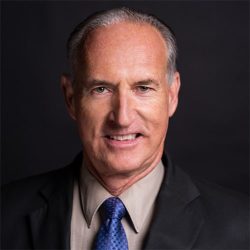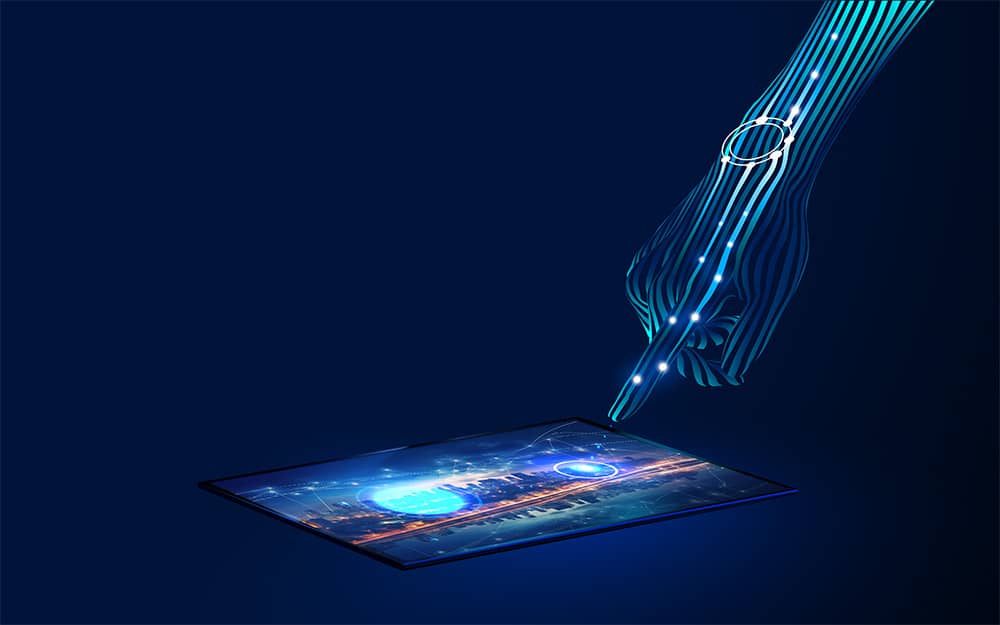
Impacting Transportation Equity
Transportation equity requires understanding the needs of every person potentially
Share:
Share:
Home » October 2023 » What Is the Future of Urban Mobility?

“With the current Federal funding of projects aiding the increase Electric Vehicle (EV) charging availability, we have seen an increase in EV charging projects in the Midwest. Projects for infrastructure improvement to support EV charging and installation of EV chargers are occurring rapidly with plans for more in the near future. There’s also an increased development of alternative solutions to cars with the increased in testing of new batteries and the design of flying “cars”. It sounds out of this world, but The Ohio State University is building a new battery testing facility and companies like Alef Automotive in California are taking pre-orders for their FAA airworthiness certified electric flying vehicles.”

“As someone who works with developers across the nation, the trend is to build micro cities within a larger city. These micro cities while they include parking for the appetite of Americans to drive cars outside of the city, transportation within the micro city is designed to be on foot and in scheduled small mass transportation that is reliable and safe.”

“Mass transit is still one of the best ways in populated areas to move large numbers of people sustainably and efficiently. Moving goods through regional hubs and closer to the end point will reduce the impact. Last mile for both will be on compact transport devices either e-assist self-propelled, or driverless as we are starting to see on the streets in San Francisco.”

“The future of transport will likely be characterized by a combination of electrification, automation, interconnected mobility services, sustainable infrastructure, and innovative modes of transportation. These changes will collectively contribute to more efficient, eco-friendly, and accessible transportation options in our nation’s most populated areas.”

“I think the future will be about Smart Infrastructure and Connectivity. The integration of smart technology and the Internet of Things (IoT) into transportation systems will improve traffic management, enhance safety, and provide real-time information to travelers. This includes smart traffic lights, vehicle to infrastructure communications and real time navigation apps.”

“The future of parking in dense urban cores is undergoing a transformative shift, moving away from traditional models to more innovative strategies. Emphasis is now on comprehensive master planning that integrates parking solutions seamlessly into the broader urban landscape. This holistic approach prioritizes sustainability, efficiency, and adaptability, ensuring that urban parking is carefully interlaced with other forms of transportation to meet the evolving needs of modern cities.”

“Recent market trends and demands are pushing us to implement electrified, shared, connected, and eventually autonomous mobility options that provide on-demand, point to point urban transportation solutions. Pilot programs and scalable management strategies should focus on improving transportation safety to meet Vision Zero goals, increasing system efficiency to support economic vitality, and reducing greenhouse gas emissions to achieve climate action plan goals.”

“The solution to congestion in cities is and has always been shared modes of transport; there isn’t enough space for everyone to drive a private vehicle or get all their items personally delivered. As a society, we’re going to get better at using technology to find opportunities to share – whether by bundling residential deliveries or making it easier and faster to catch the bus. As cities, we have a role in pricing our curbsides to reflect their high demand and give people incentives to share space.”

“Density is the future of transport for people and goods as dense, mixed use, and location efficient communities will allow people to choose how they engage with the built environment, gain more time back in their day, and provide a wider access to a greater amount of goods than sprawling low density auto oriented communities. Density is also better for businesses too! Dense communities decreases the distance between goods and consumers (which directly translates to profit for the companies as that shorter distance directly translates into lower shipping costs which is a significant portion of a consumer goods companies bottom line), helps with the forecasting of and provision of goods (again great for the bottom line, allows for companies to really lean into Just In Time shipping as there is shorter distance to transport goods which means that companies can be more responsive to fluctuations quicker), and requires less trucks on the roads (better for the environment, companies’ bottom lines, and the consumer as there are less trucks on the road contributing to traffic a win/win/win).”
HAVE A QUESTION? Send it to editor@parking-mobility.org and watch this space for answers from the experts.
The opinions and thoughts expressed by the contributors do not necessarily reflect the opinions and viewpoints of the International Parking & Mobility Institute or official policies of IPMI.
This article has been written and/or compiled by the staff of Parking & Mobility magazine.

Transportation equity requires understanding the needs of every person potentially

Aside from electric and automated vehicle use, what “green” practices

The Transformative Era of Urban Mobility
Parking & Mobility is IPMI’s flagship publication, covering the news, trends, analysis, technologies, and people of the parking and mobility industry, and how it affects and influences communities around the world.
| Cookie | Duration | Description |
|---|---|---|
| cookielawinfo-checkbox-advertisement | 1 year | Set by the GDPR Cookie Consent plugin, this cookie is used to record the user consent for the cookies in the "Advertisement" category . |
| cookielawinfo-checkbox-analytics | 11 months | This cookie is set by GDPR Cookie Consent plugin. The cookie is used to store the user consent for the cookies in the category "Analytics". |
| cookielawinfo-checkbox-functional | 11 months | The cookie is set by GDPR cookie consent to record the user consent for the cookies in the category "Functional". |
| cookielawinfo-checkbox-necessary | 11 months | This cookie is set by GDPR Cookie Consent plugin. The cookies is used to store the user consent for the cookies in the category "Necessary". |
| cookielawinfo-checkbox-others | 11 months | This cookie is set by GDPR Cookie Consent plugin. The cookie is used to store the user consent for the cookies in the category "Other. |
| cookielawinfo-checkbox-performance | 11 months | This cookie is set by GDPR Cookie Consent plugin. The cookie is used to store the user consent for the cookies in the category "Performance". |
| CookieLawInfoConsent | 1 year | Records the default button state of the corresponding category & the status of CCPA. It works only in coordination with the primary cookie. |
| elementor | never | This cookie is used by the website's WordPress theme. It allows the website owner to implement or change the website's content in real-time. |
| viewed_cookie_policy | 11 months | The cookie is set by the GDPR Cookie Consent plugin and is used to store whether or not user has consented to the use of cookies. It does not store any personal data. |
| Cookie | Duration | Description |
|---|---|---|
| _ga | 2 years | The _ga cookie, installed by Google Analytics, calculates visitor, session and campaign data and also keeps track of site usage for the site's analytics report. The cookie stores information anonymously and assigns a randomly generated number to recognize unique visitors. |
| _ga_02PMHW8YWC | 2 years | This cookie is installed by Google Analytics. |
| _ga_LC0QJJHM3J | 2 years | This cookie is installed by Google Analytics. |
| _ga_V9KYTSBYT2 | 2 years | This cookie is installed by Google Analytics. |
| iutk | 5 months 27 days | This cookie is used by Issuu analytic system to gather information regarding visitor activity on Issuu products. |
| Cookie | Duration | Description |
|---|---|---|
| mc | 1 year 1 month | Quantserve sets the mc cookie to anonymously track user behaviour on the website. |
| Cookie | Duration | Description |
|---|---|---|
| ultp_view_1052 | 1 day | No description |
| ultp_view_1058 | 1 day | No description |
| ultp_view_1060 | 1 day | No description |
| ultp_view_1064 | 1 day | No description |
| ultp_view_1068 | 1 day | No description |
| ultp_view_1070 | 1 day | No description |
| ultp_view_1072 | 1 day | No description |
| ultp_view_1078 | 1 day | No description |
| ultp_view_1082 | 1 day | No description |
| ultp_view_1088 | 1 day | No description |
| ultp_view_1100 | 1 day | No description |
| ultp_view_1103 | 1 day | No description |
| ultp_view_1114 | 1 day | No description |
| ultp_view_1118 | 1 day | No description |
| ultp_view_1122 | 1 day | No description |
| ultp_view_1125 | 1 day | No description |
| ultp_view_1130 | 1 day | No description |
| ultp_view_1132 | 1 day | No description |
| ultp_view_1135 | 1 day | No description |
| ultp_view_1541 | 1 day | No description |
| ultp_view_1554 | 1 day | No description |
| ultp_view_1557 | 1 day | No description |
| ultp_view_1560 | 1 day | No description |
| ultp_view_1563 | 1 day | No description |
| ultp_view_1568 | 1 day | No description |
| ultp_view_1572 | 1 day | No description |
| ultp_view_1576 | 1 day | No description |
| ultp_view_1580 | 1 day | No description |
| ultp_view_2305 | 1 day | No description |
| ultp_view_2321 | 1 day | No description |
| ultp_view_2338 | 1 day | No description |
| ultp_view_2342 | 1 day | No description |
| ultp_view_259 | 1 day | No description |
| ultp_view_270 | 1 day | No description |
| ultp_view_275 | 1 day | No description |
| ultp_view_286 | 1 day | No description |
| ultp_view_3074 | 1 day | No description |
| ultp_view_3115 | 1 day | No description |
| ultp_view_3334 | 1 day | No description |
| ultp_view_3336 | 1 day | No description |
| ultp_view_3338 | 1 day | No description |
| ultp_view_3340 | 1 day | No description |
| ultp_view_3346 | 1 day | No description |
| ultp_view_3354 | 1 day | No description |
| ultp_view_3361 | 1 day | No description |
| ultp_view_3367 | 1 day | No description |
| ultp_view_365 | 1 day | No description |
| ultp_view_367 | 1 day | No description |
| ultp_view_38 | 1 day | No description |
| ultp_view_3846 | 1 day | No description |